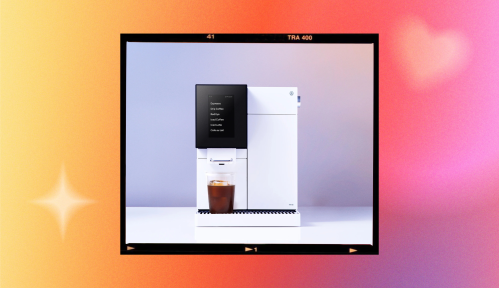There’s no single cause of back pain: pregnancy, constipation, heavy boobs, muscular injuries, and poor posture are just a few of the common culprits. In fact, back pain is such a widespread complaint that roughly 80 percent of all Americans will experience it at some point in their lifetime, according to the American Chiropractic Association.
Experts in This Article
assistant professor in the Department of Physical Therapy at Mount Saint Mary’s University in Los Angeles
performance coach at Future
instructor at East River Pilates in New York City
professional dancer in Dancing with the Stars and creator of The Movement Club
injury prevention researcher, sports medicine specialist, and fitness trainer
NASM certified personal trainer
owner of Symmetry Physical Therapy in Calabasas, California
CorePower Yoga instructor
Luckily, we gained a wealth of information from medical professionals this year about how to alleviate chronic back pain. So if it’s got you down, no worries— we’ve got your back. Ahead, find the best exercises and stretches for back pain we learned about in 2022.
9 lessons on easing back pain we learned this year
1. Stretches for back pain after a road trip
Sitting still for prolonged periods of time can cause our back to tighten up, such as when you’re in a car for hours at a time. To relieve back pain cause by road trips, physical therapist and assistant professor Abbigail Fietzer, DPT, recommends sitting up straight while en-route to your destination, as well as engaging your core muscles.
Once you’re out of the car, try stretches that counter the position your back was in during transit like pelvic tilts, prone press ups, and kneeling hip flexor stretches. You can also try stretching with the help of tools like a foam roller or chirp wheel.
“Think of stretching into the opposite way of how it had statically been,”Brad Baker, DPT, a performance coach at Future, previously told Well+Good. “When you sit for a long period of time, your “low back is flexed forward, pelvis is tilted back, and hips are in a flexed forward position as well.”
2. Areas to exercise for back pain caused by big boobs
If you’re suffering from back tension caused by heavy breasts, physical therapists and personal trainers alike recommend strength training moves that target your core and upper back. Building up a strong core will improve your ability to stabilize the spine, removing some pressure from your back, while training the upper back can improve poor posture caused by the weight of your chest. Finally, breathing deeply with your diaphragm can lessen the strain on your upper chest and neck.
3. Stretches and exercises for lower back pain during pregnancy
Professional dancer and Dancing With The Stars alum Lindsay Arnold learned to navigate lower back pain during her second pregnancy by keeping active. Glute-activating moves like bird dogs and leg lifts helped her build a strong support system for her back, and stretches like child’s pose and cat/cow stretch helped alleviate tension. Other stretches like kneeling lunges and pigeon pose can seriously relieve lower back tightness, too.
Here’s the right way to perform bird dogs, BTW:
“Low back pain in pregnancy is one of the most common frustrations for women,” Arnold previously told Well+Good. “It is important to work on strengthening the supporting muscles, as well as stretching to improve joint mobility and release muscle tension.”
4. Chest stretches for upper- and middle-back tension
If you feel tightness in your upper and middle back, try stretching out your chest. According to physical therapists, a tight chest can round your shoulders forward, worsening existing back pain. In the 10-minute chest opening stretch routine below, pilates instructor Brian Spencer demonstrates moves that incorporate your chest muscles (aka pecs). By expanding your pec muscles, you’ll improve blood circulation, mobility, and posture.
5. Glute exercises for lower back pain
In case you needed a reason to do your squats today, a stronger booty can help alleviate chronic lower back pain. “Your low back muscles can and will compensate for inactive glutes,” physical therapist Natalie Sampson, DPT, previously told Well+Good. “Glutes can be inactive from weakness, or because they are tight or restricted.”
A resistance band can help you build a better base. Banded squats, banded side steps, and banded front steps can strengthen your side glutes and lessen lower back strain over time.
6. Camel pose for all-over back pain and rounded shoulders
The benefits of yoga know no bounds! Camel pose, or ultrasana, is an open-heart back stretch that can strengthen your back, correct rounded shoulders, expand your chest, and alleviate back pain. To that end, CorePower Yoga instructor Sabrina Washington recommends properly warming up before trying camel pose as this heart opening backbend is more strenuous than other yoga asanas—and if you’re currently getting over an injury, Washington suggests skipping this stretch.
“This is an intermediate and more strenuous pose that can agitate preexisting muscle aches or joint issues in these areas,” she previously told Well+Good. “Be sure to speak with your doctor if you have any concerns before practicing yoga.”
7. A tennis ball massage for insomnia caused by back pain
Unrelieved back tension can make for some sleepless nights. If back pain is keeping you from catching some zzzs, try placing a tennis ball on your mattress directly under the spot that’s bothering you. The gentle pressure from the tennis ball will help lengthen and stretch the affected muscle. Just be sure that you don’t fall asleep on top of the tennis ball, and avoid placing it directly underneath your spine as this can cause bruising and even worsen your existing discomfort. Ouch!
8. Core-strengthening exercises for back pain in seniors
Personal trainer Lori Michiel, 68, knows more than a thing or two about maintaining a fit physique as you get older. Part of her work involves teaching senior clients how to locate and activate their core muscles. Core training can improve balance and ward off back pain, two common complaints from her clients. Her go-to move? A standing dumbbell raise because it flexes the abdominal muscles and strengthens them over time
9. A lower-back stretch to loosen sneaky abdominal muscles
Twisting, reaching, and pushing motions can stretch the upper back in a flash, but the lower back can be harder to target. Injury prevention specialist and athletic trainer Liz Letchford, PhD, says the quadratus lumborum (or QL), a sneaky, super deep lower-back muscle, could be the cause of your lower back pain. As with any instances of serious back pain, Letchford recommends checking in with a medical professional. Moving an injured muscle, even in an attempt to stretch it, could cause further harm.
“The QL is likely tight because the pelvic musculature isn’t working optimally,” Dr. Letchford previously told Well+Good. “Stretching may provide relief in the short term, but the best approach would be to work with a movement specialist to determine where you may be compensating.”
After getting the go-ahead from a PT, try this door frame stretch to target the quadratus lumborum and release lower back tension.
Following these tips next time you’re feeling tight or achey and you’ll be back on track in no time.
Sign Up for Our Daily Newsletter
Get all the latest in wellness, trends, food, fitness, beauty, and more delivered right to your inbox.
Got it, you've been added to our email list.











